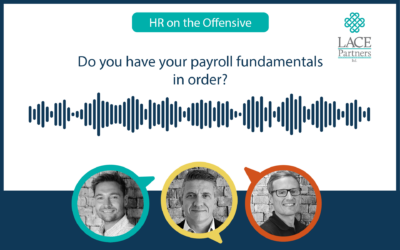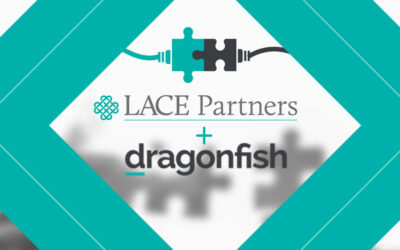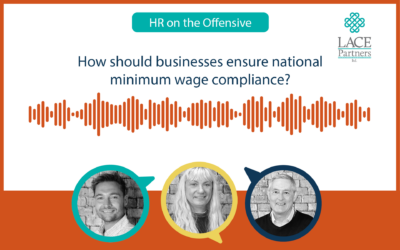With so many HR technologies in the marketplace for People functions it’s easy to become overwhelmed about how much technology you should have in your business and what technology will add value. We were recently asked to comment on some of the top HR technologies that every business should make sure it has, so wanted to deep dive that for our audiences.
As always it is important to ask yourselves the question, “why do we want this, what is our aim and what difference is it going to make?”. Outlined below are the basis of what every business should have in place to be successful with its people function. We asked HR technology expert Rebecca Addison to give us her input. So, what should you be looking at?
Get yourself the right HRIS
The tech backbone of an organisation is the Human Resources Information System (HRIS). It’s critical because it holds all core people data. A business needs to understand where its people are and what they’re doing. But an HRIS needs to be appropriate to the size of the business – there are giants that offer tech that will ‘do it all’ such as Workday, SAP and Oracle, but these might be overkill for medium-sized businesses or smaller (you can also find a range of other providers here). The important thing is to choose the right platform for a business’ needs – not only now, but something that’s scalable so it fits future requirements too. When thinking about what you need for your business, think about what your business objectives are – what is your primary driver when it comes to a system? Are you focused on employee experience (you should be!)? Compliance? Reporting and analytics? There are lots of factors to consider and different systems will meet different needs but get your HRIS right and you are halfway there.
Most organisations have already invested in an HRIS but maybe it’s time to review your choice – it might be time for a refresh or a process of optimisation – embedding an HRIS into an organisation is always challenging and requires ongoing investment in time and resource, this ongoing investment is often overlooked during implementation which can cause issues further down the line. If it’s not quite working for you now, before you decide to throw it away and start again, maybe it’s time to look at some of those quarterly releases that you didn’t get round to implementing properly and see if you can get more functionality out of the system you already have, or adapt the way you are using it to better to meet your needs? I would also recommend reviewing how well the system is being adopted across the organisation – sometimes a new fresh approach to embedding the change can help drive big improvements.
The bigger HRIS systems will come with the functionality we go on to discuss in this article, but businesses need to consider, too, whether one system that does it all is right for their business, or several separate systems. There are benefits to speed and agility of implementation and systems that offer more bespoke solutions. Either way, the choice needs to work with the existing technology stack.
Get yourself a top rate talent management system
This supports businesses for recruitment, performance and learning. It helps get the right talent through the door plus support business operations and transformation. Beyond recruitment, performance and learning modules support employees develop and grow. Providing tools to help people progress are vital – it supports business needs of course, but now, when talent shortages are impacting most businesses, retention is core.
When you think about your recruitment system for example, consider how simple it can make the candidate application process – does it come with its own web front end? Are you building your own or linking it to your existing website? Either way, you want a system that will facilitate as close to ‘one-click application’ as possible. Everyone is chasing talent – you need to make sure candidates can apply to your organisation quickly and easily. You also want the candidate management process to be as simple and intuitive as possible for your hiring managers – keep it simple and easy for them to view CVs and provide feedback.
When it comes to performance management, many organisations are moving away from the traditional annual cycle or are at least bringing in lighter touch check-ins throughout the year. You need to ensure that your system can support this process and not hinder it – the benefit of a good performance management system is to be able to support quick and flexible processes – to enable you to keep track of manager and employee interactions without slowing it down.
For learning, focus on a system that can give employees the ability to get content in a variety of different formats. Learning systems can do so much more than just provide the basic compliance modules – modern systems can help drive relevant content to employees based on their role and should link to performance management goals and objectives to drive learning and skill development.
Another great tool in your talent suite, to build on to your learning platform, is something that will help you advance your skills agenda. As more businesses start to make the shift to skills, think about what tech you can utilise to give you transparency and enable your employees to own their own skills profile and development. There are some great tools out there such as Degreed and Edcast, that can help you boost your learning offering, help with upskilling of your workforce and help you understand skills-based career pathways.
There are some other great tools out there that can really accelerate your skills and talent intelligence journey – companies such as Eightfold, Sky Hive, Tech Wolf and Simply get Results have built tech that utilises AI, analytics and external market data alongside some pretty impressive algorithms that will enable you to really understand what skills you have and need in your organisation.
Get yourself an effective data analysis tool
Without doubt, people analytics and insights is rapidly becoming increasingly important to businesses. In these times of uncertainty, leaders are looking to understand more about their organisations. To do this successfully, a data analysis tool is vital. This tech enables a business to see its data, understand it and see trends to help make more focused decisions. This tech comes with a proviso – people with the skillsets are needed to use the tools effectively.
All systems will come with reporting functionality but there is a broader piece here – you need to find a way to effectively get the data out of all your systems and bring it together to give you a clear and consistent reporting across your full technology stack. Not always an easy task with reports coming out in a variety of formats and with different information coming from each system.
There are tools out there that will integrate into your core tech and help pull out the key data or help you to recognise trends. Pulling the right people data and using it to meaningfully analyse what is going on in your workplace it critical to your business. Think about more than just providing your managers with dashboards – how can you tailor the data to be meaningful to them?
Rather than just sending managers standard reports on a daily / weekly basis, take the time to understand what data would be really helpful to them and build the right reports – maybe they need to understand what turnover is like in their team that month, or how many people are absent, or who is up for promotion – different businesses will have different needs depending on size and industry but think about making it relevant – then people data can really add value and help to drive business outcomes.
There is all sorts of tech that can help you here – from Power BI to Crunchr, One Model, OrgVue, Visier, Tableau and Qualtrics (to name just a few!), there are loads of bespoke systems that can help bring your analytics to life. But the key is keeping it simple, relevant and secure – don’t over complicate things – take the time to really understand what works for you.
In the coming weeks we’ll be launching services to help support businesses with their people analytics, so if you’re interested in finding out more use the form at the bottom of this blog and we can get back in touch.
Get your payroll right
Payroll may be considered boring, but it’s the silent business hero. When payroll is working well, no one talks about it. It’s a core element of having happy employees and a happy workplace. It needs to work for the business, the payroll team, provide essential data and be engaging for employees.
But it’s important to remember that Payroll is really at the end of the chain. The data that flows into the Payroll system can come from a variety of sources upstream – this goes back to getting your HRIS right. Aside from your core people data, your HRIS may well drive things like workforce management, timesheets and absence, all of which will affect payroll. The data needs to be accurate at source and integrated effectively to make payroll a success.
Get the right listening tech
Businesses that understand employees – especially if going through a transformational process – will fare better. Hearing employees’ opinions through ‘listening’ tech will show how people are feeling, their drivers and motivations, what they want from their employer. This enables a business to make purposeful, strategic choices to support productivity, engagement and retention.
Think beyond the traditional annual survey and look at how you can be more flexible and reactive when listening to employees. Employee listening tech will allow you to take regular pulse surveys or check points so you can continually monitor employee wellbeing and engagement. Most importantly – make sure you use the data you collect. Listening is great, but you need to make sure you use it to drive action and make changes that will really help to keep your employees motivated and engaged.
Where is your business at in its tech roadmap landscape? If you’d like to talk to us about what HR technologies are right for your organisation, we would love to help. Reach out using the form below or take a look at our services in this area here.









